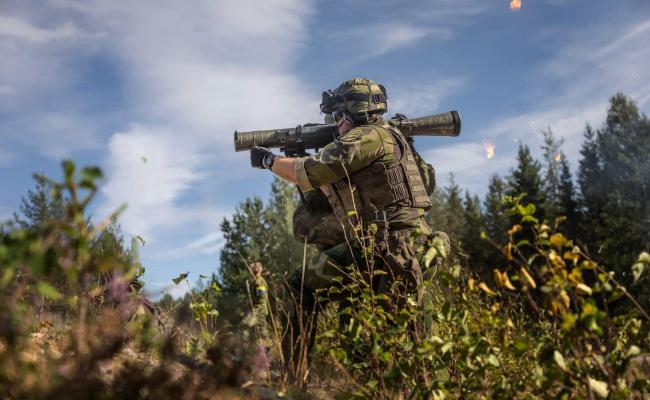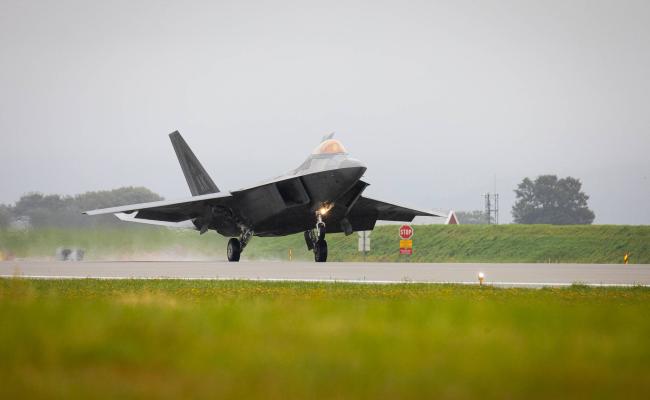Swedish and American Forces Practiced Compating Targets in Northern Sweden
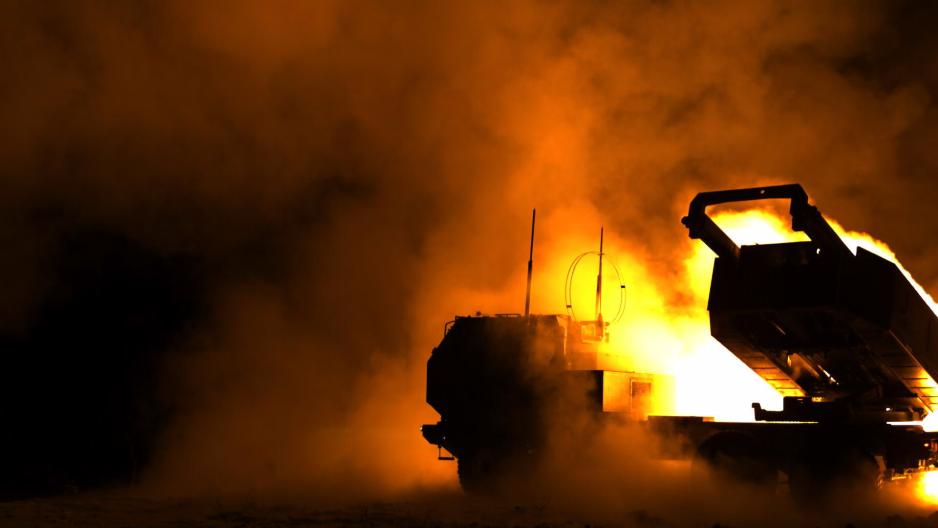
Exercise with American High Mobility Artillery Rocket System (HIMARS) at the Swedish Armed Forces' base in Vidsel, Norrbotten County in Northern Sweden, in the fall of 2021. A similar American-Swedish joint exercise was carried out this week. (Photo: Anders Åberg/Vidsel Test Range).
On Tuesday, the Swedish Armed Forces and special forces from the US practiced in Northern Sweden with the High Mobility Artillery Rocket System (HIMARS). “The outcome of the exercise proves that we are able to fight long-distance targets with high precision”, says deputy Chief of the Swedish Army.
On Tuesday, American special forces were flown with a C-130 Hercules aircraft to the Swedish Armed Forces' base in Vidsel, Norrbotten county in Northern Sweden.
They quickly unloaded the HIMARS rocket artillery to fire at a target three miles away, indicated by Swedish forces, before packing up and moving. This is reported by the Swedish Armed Forces in a press release.
HIMARS is an American mobile rocket artillery system that provides long-range precision fire, up to 30 miles.
The American forces belong to the US Army Europe and Africa's 56th Artillery Command. There are reinforcement forces which, based out of Ramstein Air Base in Germany, continuously travel around Europe and practice HIRAIN missions such as this one, that is, rapid infiltration with the HIMARS system.
“The outcome of the exercise proves that, in cooperation with partners, we are able to fight long-distance targets quickly and with high precision, which is crucial in order to avoid being defeated”, says deputy Chief of the Swedish Army, Laura Swaan Wrede.
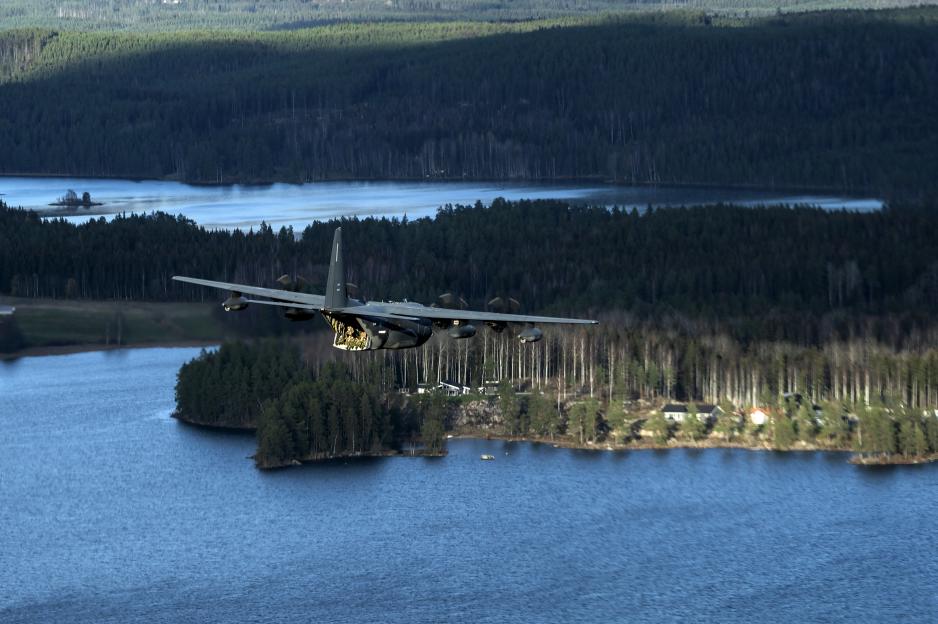
An American MC-130 transport aircraft transports American and Swedish soldiers during a similar exercise last year. (Photo: Tech. Sgt. Westin Warburton/US Air Force)
For quick and reliable cooperation
Swedish K 3 units provided the target's coordinates – a fictitious command post consisting of vehicles and containers. From the American side, specifically, there were units from the 2nd Multi-Domain Task Force and 41st Field Artillery Brigade.
With the HIMARS system, they fired six missiles (of the 227 mm M31 type) with 91 kg high-explosive warheads, and the "command post" was duly hit. The missiles are GPS guided, which provides high accuracy.
The exercise carried out in Northern Sweden is called Nordic Strike 22 by the Americans and is designed to increase preparedness, deadly precision, modernization, and cooperation, according to the US Army Europe and Africa.
The activity involves rapidly deploying American capabilities for long-range sniper fire in coordination with allied and partners, and by extension integrating joint firing in a multinational environment.
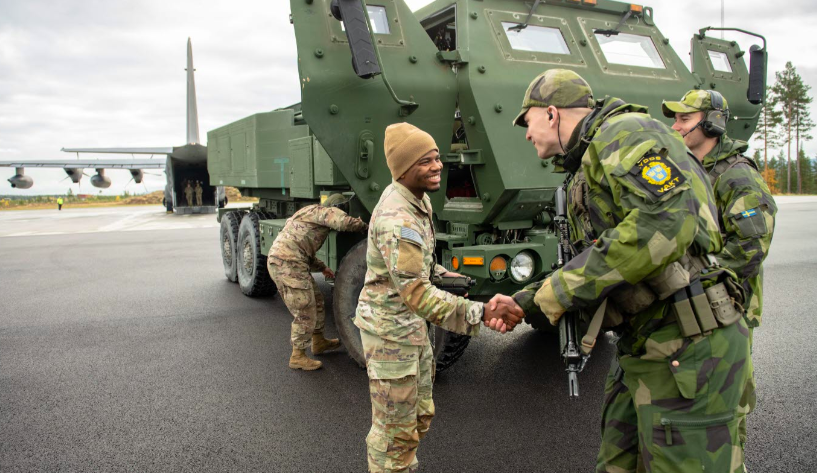
Swedish forces welcome American forces at the Vidsel base while the HIMARS artillery system is unloaded from the Hercules transport aircraft. (Photo: Hampus Hagstedt/Swedish Armed Forces).
Today’s exercise stresses the importance of long-range artillery in a modern army.
Thinks the Ukraine war uncovers a need
The deputy Chief of the Swedish Army emphasized that the war in Ukraine clearly uncovers the need for long-range combat systems, such as HIMARS.
"Today’s exercise stresses the importance of long-range artillery in a modern army. A combination of gun barrel artillery and rocket artillery is a potential, future solution for the Swedish Armed Forces," says Laura Swaan Wrede.
With this type of rocket artillery, the Swedish island of Gotland in the Baltic Sea can be defended from the mainland, for example, or the Baltic NATO states from Gotland, the press release states with a nod to the impending Swedish membership of the alliance.
Swedish and American forces recently practiced with HIMARS for the first time last fall on Gotland and at the Vidsel base in Northern Sweden.
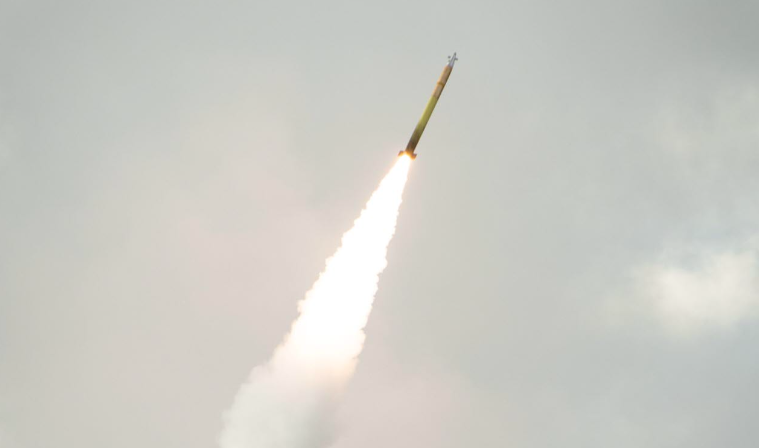
Six GPS guided M31 missiles were fired at a target three miles away. (Photo: Hampus Hagstedt/Swedish Armed Forces)
Also read
This article was originally published in Norwegian and has been translated by Birgitte Annie Molid Martinussen.


